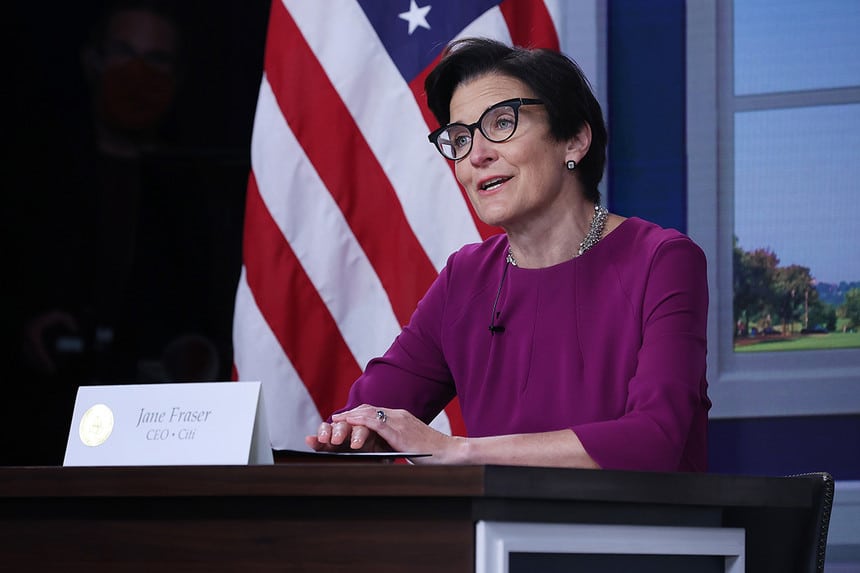Citigroup Inc. has joined forces with two data and modeling powerhouses in preparation for new regulations aimed at ensuring major banks stay afloat amid the global shift away from fossil-fuel-based energy.
The lending giant announced plans yesterday to use a tool developed by S&P Global Market Intelligence and Oliver Wyman to gauge its clients’ vulnerability to economic shifts spurred by climate change.
The product, which is called the Climate Credit Analytics Transition Risk model, does so by considering more than 1.6 million companies’ financial and environmental profiles — and modeling how each of them would fare in the face of the clean energy transition.
Notably, Citi decided to outsource the complex tool to the two firms for one key reason: The bank, like its competitors, is under pressure to meet the increasingly climate-focused expectations of regulators in the dozens of countries where it does business.
“This project is looking more at the actual risk of either companies not transitioning — which would be bad, obviously — or doing a great job of transitioning,” Richard Webley, Citi’s head of global data insights, said in an interview.
One possible benefit: By learning more about those risks and potential paths to net zero, the bank will be better prepared to push its clients in a greener direction.
“As various domiciles, and geographies and regulators seek to limit climate change, they’ll implement things such as carbon taxes and other measures. The tool really seeks to model out how companies will behave through that process,” said Jim Elder, a senior director at S&P Global Market Intelligence.
The move from Citi, one of the largest U.S. banks, comes as regulators around the world turn their attention to the financial threats of rising global temperatures.
The European Central Bank, Bank of England and Monetary Authority of Singapore are among those that have said they will require the lenders they oversee to run preliminary stress tests, or scenario analyses, to examine their potential losses under different climate scenarios.
U.S. regulators are further behind, but the Federal Reserve has signaled they’re in the process of developing scenario analyses for the same purpose. Citi expects the Office of the Comptroller of the Currency, another banking regulator, to pursue scenario analyses within the year, Webley said.
“That accelerated our need to bring some of this data and modeling in-house,” Webley said. “If the regulatory push hadn’t come, we’d be building our own models, and we’d be doing our own data collection, we’d be doing our own analytics.”
“This gives us the capability to respond to the regulatory requests,” he added.
To build the tool, S&P Global and Oliver Wyman gathered troves of granular data about companies’ greenhouse gas emissions, balance sheets, operating costs and more. Then they developed models to determine how each company should shift their own business strategies based on different global decarbonization scenarios — and what happens if they fail.
Notably, the scenarios themselves are based on the Network for Greening the Financial System, a global group of financial supervisors that released stress testing guidance for central banks and other regulators in 2020.
The document included a range of reference scenarios.
Among them: an “orderly transition” scenario, which would gauge banks’ risks if governments had already set a price on carbon — and achieved net-zero emissions by 2050. The group also included a “hot house world” scenario, in which no additional emissions policies are adopted and the world blows past the climate goals enshrined in the Paris Agreement, resulting in severe climate impacts.
“What happens with a lot of companies when you run through this model, is you see a real tipping point in their ability to” manage the threats at hand, Webley said.
In some cases, that could mean a company will run out of money before critical low-carbon technologies become scalable. Or, in another example, a company suffers major losses because it didn’t shift toward renewable energy and away from oil and gas quickly enough.
“And that’s where banks come in, because we’re managing that risk,” Webley said.
That said, the tool only will be as useful as the data it can access.
While a growing number of companies voluntarily disclose information about their emissions, climate pledges and more, many still do not. That’s the main reason the Securities and Exchange Commission is developing rules that would require public companies to report at least some of that information more consistently.
“As the securities regulators all get involved … they are going to force companies to make their disclosures very, very transparent,” Webley said.
And “as more of this data becomes consistent,” he added, “all of this modeling will get more accurate.”


